Homemade cordial is the perfect way of using a lot of ripe fruit and berries. Cordial, or also known as saft in Scandinavia, or squash or simply just a syrup, does not have to be just diluted fruit juice with tons of sugar. Using high quality berries or even elderflower and you can get the taste of Summer all year around.
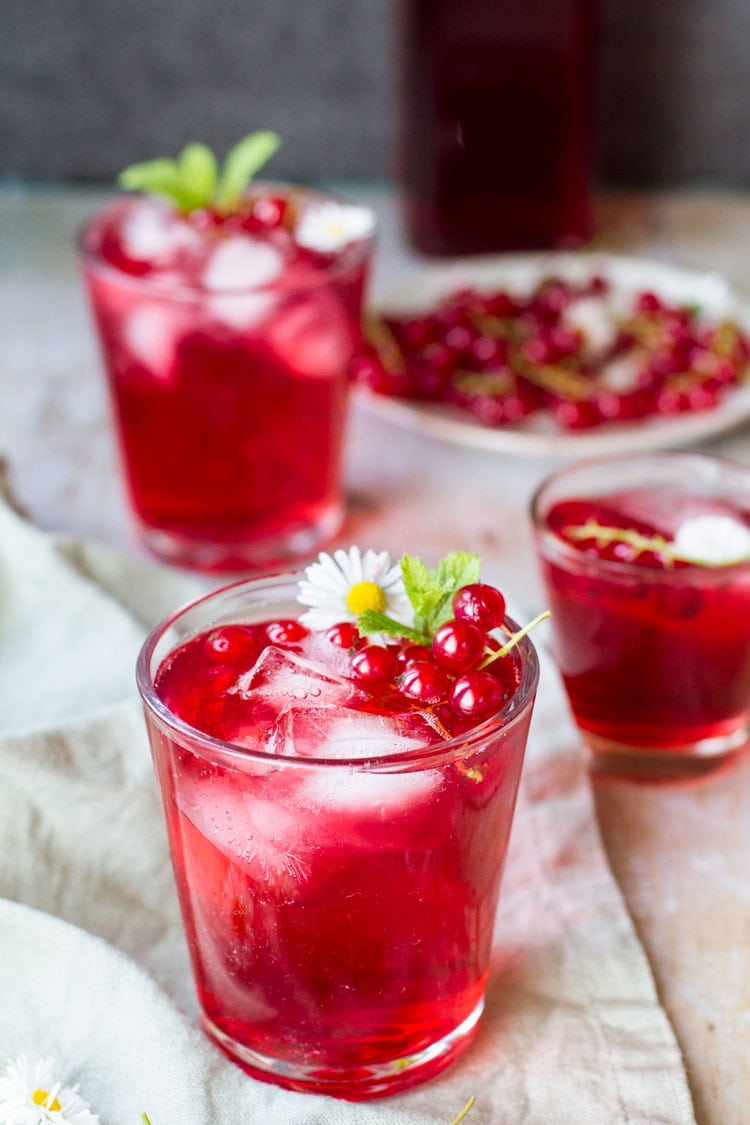
Reading Anne of Green Gables got me thinking I really wanted to share my cordial recipe with you. Cordial is just a fabulous way of preserving all the deliciousness Summer has to offer. There are two things I make each Summer and that is berry cordial and berry jams. The jam also needs its own recipe but for now you can enjoy this homemade berry cordial.
If you want more ideas on what to make with all your summer berries, check out these 24 summer berry recipes!
Several meanings to the word 'cordial'
When Googling cordial, several meanings to the word show up. Excluding "warm and pleasant", but only thinking about the actual drinks, three kinds show up:
- Liqueur: Cordial can be a super sweet distilled spirit that is almost dessert-like, like chocolate or cream based.
- Saft: Cordial is most commonly known as the non-alcoholic syrupy drink we call saft in Scandinavia.
- Medicine: However, in the earlier days it would also mean a medicinal tonic.
What is the difference between squash and cordial?
The difference between a squash and a cordial is the concentration of fruit juice. It's claimed that squash has at least 30% fruit, whereas cordial is normally around the 10 - 15% area. However, the terms are often used interchangeably. But this recipe actually has 45% fruit! You will dilute this in water of course, so it will be less, but the actual berry syrup is about 45%.
What is saft (the drink)?
Saft is the Scandinavian term for cordial or squash. We drink a lot of saft in Norway, and it's a common drink for kids that don't want to drink water. Sugar free saft, is also very popular, using artificial sweeteners. A Scandinavian saft typically has high fruit concentration (before diluting in water), but it will also depend on the type of berries. Either way - it is delicious!
You dilute 1 part saft with 4 parts water, but sometimes it can be up to 9 parts water as it depends on the concentration. For the perfect berry cordial drink here I recommend 1 part saft with 4 parts water, but it comes down to your own preferences!
How do you drink cordials?
To summarize, you drink cordial by diluting it in water. How much water depends on your own liking. You can also mix it in cocktails or serve it warm in a cozy mulled wine or Nordic gløgg. Norwegians also love to drink hot blackcurrant cordial, or blackcurrant toddy, in the winter months (non-alcoholic).
Hot mulled apple cider is almost the same too, although we don't dilute it in water when serving.
What kind of berries to use?
There are two kinds of berries I highly recommend to use in saft; and those are red currants and blackcurrants. Absolutely AMAZING together, but also so delicious on their own. I think the perfect cordial is a mixture between these two.
However, there are tons of other fruit and berries that are so, SO, good in a cordial:
- Red currants and blackcurrants
- Raspberries and blackberries
- Blueberries and cherries
- Gooseberries (omg!!)
- Lingonberries
- Plums
- Rhubarb (add some ginger for extra oomph!)
- Strawberries (although I do recommend combining it with some of the above)
- Elderflower (with some lemon, yum!) - try this easy elderflower cordial!
- Pomegranate
- All kinds of citrus
- Apples and pears
- And lemon and lime cordials are perfect in cocktails!
Between 400-700 grams of sugar to every 1000 grams of berries is usually a good bet. Less sugar for sweet fruit like apples and strawberries and more for tart ones.
Tart fruit and berries require about the same amount of sugar. 1000 grams or 2.2 lbs of red currants, raspberries, gooseberries, rhubarb and cherries need about 600 grams or 3 cups of sugar. This will of course depend on your preference, but this is mine. I think it is still tart, it's sweet but not overly sweet. Using tart berries are my favorite!
You can also mix some tart berries with some sweet berries and use less sugar. Combining red currants or raspberries with blueberries or strawberries and you can use around 500 grams or 2 ½ cups sugar per 1000 grams of berries.
Using over ripe fruit and berries make the best berry cordial. They are chock full of flavor, juice and nutrients. These berries are too ripe to make into jello or jams.
Sterilizing the bottles makes the cordial last until next Summer!
And it is in fact not so scary as it sounds. Pre-heat oven to 275F (140C) and place a tray in the middle of the oven. Wash your glass bottles in hot soapy water, and then place them on the tray. Let them in there for at least 20 minutes. Fill the jars with cordial when they are still hot. You also need to wash and heat the lids.
Sterilizing jars and bottles helps anything to last longer, especially things with a lot of sugar. Sugar is a great preservative, but if the jars or bottles aren't sparkly clean, the contents can still go bad pretty quickly.
Examples of things that could last a very long time if jars are sterilized correctly: ginger syrup, blackberry syrup, lemon curd, salted caramel sauce, coffee caramel sauce, cranberry sauce and lilac syrup. This is true for all kinds of simple syrups and caramel.
Three ways to make cordial / squash / saft
- Steam juicing (dampkoking)
- Boiling (koking)
- Raw juicing (råsafting)
Not sure if these are the terms in English, but now they are!
Method #1: Steaming
This is the most effective, as you don't have to remove every little vine. A quick wash and remove bruised and rotten berries is usually enough. You still need to pit fruit and berries like cherries and plums. Place them in the cordial steamer (not affiliate link, I just think it's helpful!), or some people call it a juice extractor, with berries and sugar in layers. Place this steamer on top of a casserole that fits snuggly. The casserole should be filled with water, leaving about 2.5 inches (3cm) at the top.
Pin the tube so the juice doesn't come out. Place the lid on the steamer and do not take it off at any time during the steaming process. If the pressure lifts the lid, place something heavy on top.
How long it will steam depends on your berries, but my red currant cordial needs about 80-90 minutes. It's usually not less than an hour, although raspberries, plums and pears need less, about 45 minutes.
When it's done, take the pin off the tube and fill your sterilized bottles. Keep in a cool and dark place.
Method #2: Boiling
I realize not everyone has room for an extra appliance in their kitchen. You can however simply add them to a casserole directly. Make sure the berries are clean, remove vines (and pits for plums and cherries!).
Add the berries and water to a large casserole. Let it boil (covered with a lid) until the berries are pale and have released most of their juices. Make sure the berries don't break, as this will make your cordial cloudy. Add a damp old kitchen towel or cheesecloth to a large colander and the colander over a new casserole or big bowl. Pour the berry water in. Let this drip overnight (or a few hours), do not help it as this will also make the cordial cloudy.
Once it's done, pour the berry water back into a large saucepan along with sugar (and spices if using). Bring this up to a boil, remove the foam with a spoon and once the foam is gone, pour into sterilized bottles. Keep in a cool and dark place.
Method #3: Raw juicing
This method retains the most amount of nutrients in the berries, but it is also the one that keeps the worst. It also needs more sugar to help preserve the cordial. This is super easy though!
Rule of thumb:
- 1000 grams or 2.2 lbs berries
- 800ml or 3 ½ cups water
- 1000 grams or 5 cups of sugar
- 1 tablespoon citric acid or ¾ cup lemon juice
Add washed berries to a blender or mash in a large bowl. You may need some water to help mash it. Pour over water and lemon juice (or citric acid/tartaric acid). Let this mixture sit overnight before adding sugar. Remember that raw cordial needs more sugar to help preserve it. A rule of thumb is about ¾-1 parts sugar to 1 part berries.
You can use less sugar, but the cordial will keep for a shorter amount of time. Start with little and taste as you go, stop when you think it's sweet enough but just remember it won't keep that well.
Then strain it through a sieve covered in a cheesecloth or damp old kitchen towel - remember to keep a bowl underneath.
This will keep for up to 3 weeks in the fridge, but the best way to preserve it is to freeze it! To freeze: pour into smaller bottles, leaving some room as the liquid expands once frozen.
I hope this isn't too confusing. The amount of sugar is helping to preserve, and to make it taste good. I think as long as you keep at least half of the sugar content, you can adjust to your own sweetness preference.
Again, if you want to make elderflower cordial instead, check this homemade elderflower cordial recipe! So easy, floral and slightly citrusy.
Scroll down to find a printable recipe card for homemade berry cordial. For more recipes using lots of fruit, check the category Fruit & Smoothies out, newest recipe will always be at the top. Enjoy!
More recipes using fresh Summer berries:
- Super Easy Blackberry Syrup
- Homemade Fresh Jello
- Easy Rhubarb Crisp
- The Best Summer Berry Pavlova
- Strawberry Rhubarb Oatmeal Bars
- Fresh Strawberry and Lemon Curd Layer Cake
- ... + crème anglaise to pour over fresh berries for the perfect creamy dessert!
I’d love to hear your thoughts. Comment below or tag me @thegingerwithspice on Instagram. And don’t forget to Pin it for later! To make sure you’re never missing another recipe, please feel free to subscribe to my newsletter. As a thanks you will receive a free e-cookbook Travels Through the Seasons, with many delicious recipes from around the world that suit different seasons of the year.
In order to keep the blog up and running this post may contain affiliate links, it will be at no extra cost to you, please read the disclosure for more information.
Download your FREE copy of Travels Through the Seasons Cookbook here!
📖 Recipe

Homemade Berry Cordial Recipe
Homemade cordial, also known as squash, syrup or in Scandinavia it's saft, is the perfect way of using a lot of ripe fruit and berries. Using high quality berries or even elderflower and you can get the taste of Summer all year around.
Ingredients
Steaming Method
- 2.2 lb tart-ish berries, 1 kg. Like red currants, blackcurrants, raspberries
- water to fill the casserole
- 2 ½ - 3 cups sugar, 500-600g
Boiling Method
- 2.2 lb tart-ish berries, 1 kg. Like red currants, blackcurrants, raspberries
- 2 ½ cups water, 600ml
- 2 ½ - 3 cups sugar, 500-600g
Raw Juicing Method
- 2.2 lb tart-ish berries, 1 kg. Like red currants, blackcurrants, raspberries
- 20 g citric acid, or ¾ cup (180ml) lemon juice
- 2 ½ cups water, 600ml
- 5 cups sugar, 1 kg*
Instructions
Steaming Method
- Wash the berries, no need to remove all leaves and vines. Discard rotten and bruised berries.
- In the casserole that fits the cordial steamer snuggly, fill with water, leaving 2.5in (3cm) at the top. Top with the cordial steamer and pin the tube so the juice doesn’t come out.
- In the cordial steamer, layer berries and sugar. Place the lid on and place something heavy on top. Do not open the lid during the steaming process.
- How long it will steam depends on your berries, but my red currant cordial needs about 80-90 minutes. It’s usually not less than an hour, although raspberries, plums and pears need less, about 45 minutes.
- When it’s done, take the pin off the tube and fill your sterilized glass bottles. Keep in a cool and dark place.
Boiling Method
- Add the washed berries and water to a large casserole. Let it boil (covered with a lid) until the berries are pale and have released most of their juices. Make sure the berries don’t break, as this will make your cordial cloudy.
- Add a damp old kitchen towel or cheesecloth to a large colander and the colander over a new casserole or big bowl. Pour the berry water in. Let this drip for at least one hour, do not help it as this will also make the cordial cloudy.
- Once it’s done, pour the berry water back into a large saucepan along with sugar (and spices if using). Bring this up to a boil, remove foam with a spoon and once the foam is gone, pour into sterilized glass bottles. Keep in a cool and dark place.
Raw Juicing Method
- This method retains the most amount of nutrients in the berries, but it is also the one that keeps the worst. Plus, it needs more sugar to help preserve the cordial.
- Add washed berries to a blender or mash in a large bowl. You may need some water to help mash it. Pour over water and lemon juice (or citric acid/tartaric acid). Let this mixture sit overnight.
- Strain it through a sieve covered in a cheesecloth or damp old kitchen towel – remember to keep a bowl underneath. Combine with sugar. Pour into sterilized glass bottles.
- This will keep for up to 3 weeks in the fridge, but the best way to preserve it is to freeze it! To freeze: pour into smaller bottles, leaving some room as the liquid expands once frozen.
To drink
- When ready to serve, add 1 part cordial with 4 parts water to a glass. You may want more or less water depending on your own preference. Delicious both warm and cold, in a gløgg for Christmas or in this blackberry martini!
Notes
* The amount of sugar is high in raw juicing because it helps preserve the cordial. You can use less, but then it will keep for a shorter time. Half is also fine. Give it a taste along the way and stop once you think it's sweet enough.
Sterilizing glass bottles: Wash with hot soapy water. Heat in the oven at 275F (140C) for at least 20 minutes. Including lids. Pour cordial into the hot bottles.
Nutrition Information:
Yield: 21 Serving Size: 3 tbspAmount Per Serving: Calories: 116Total Fat: 0.1gSaturated Fat: 0gUnsaturated Fat: 0gCholesterol: 0mgSodium: 0mgCarbohydrates: 30.4gFiber: 2.1gProtein: 0.7g







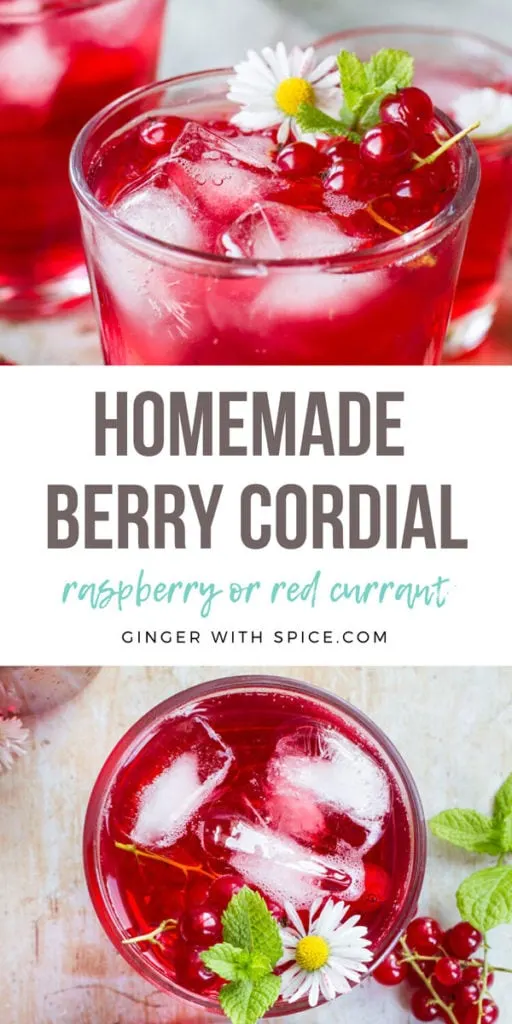


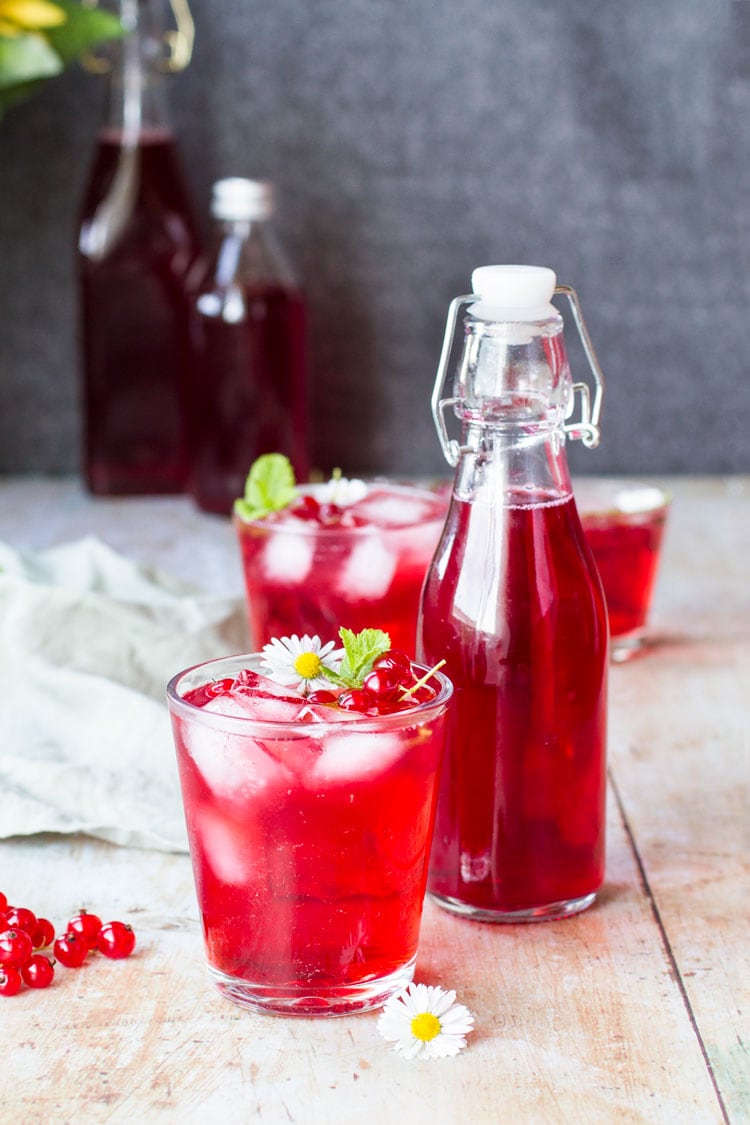
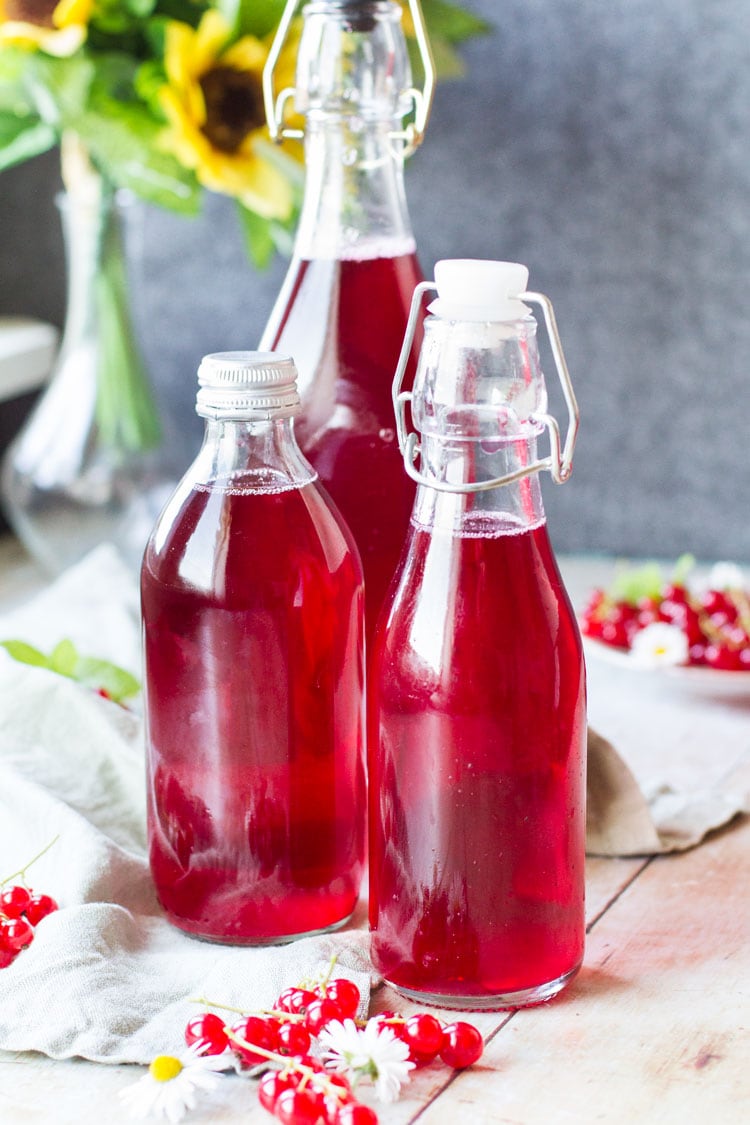
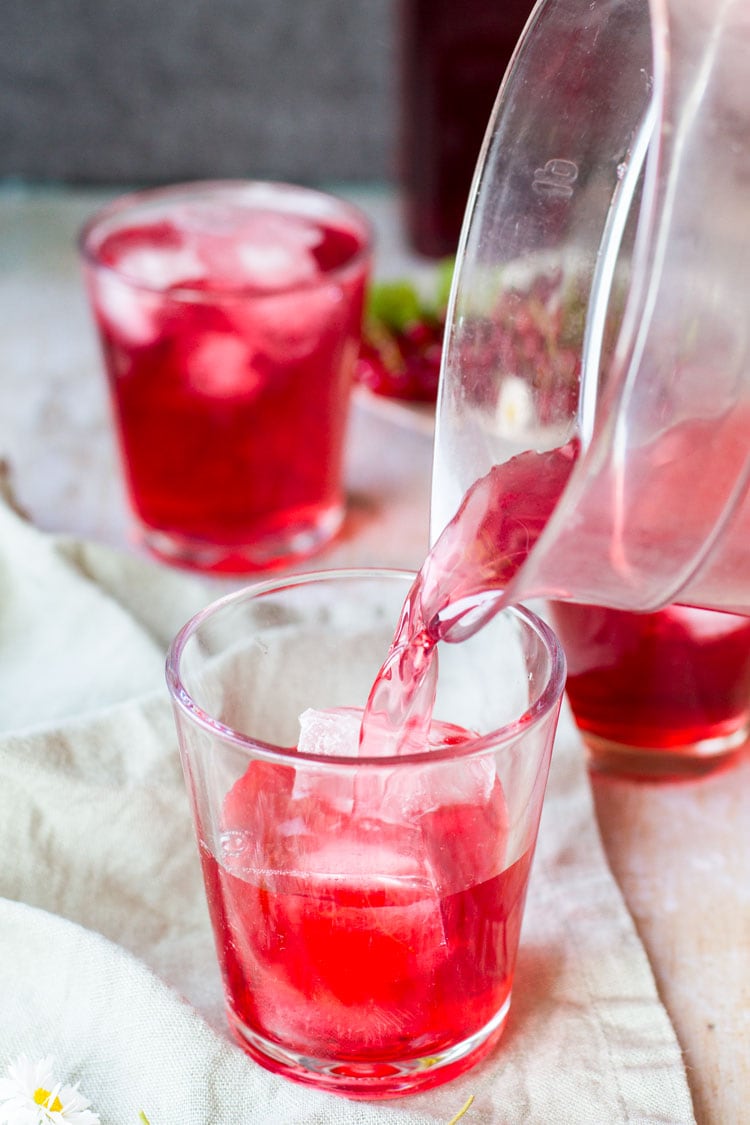
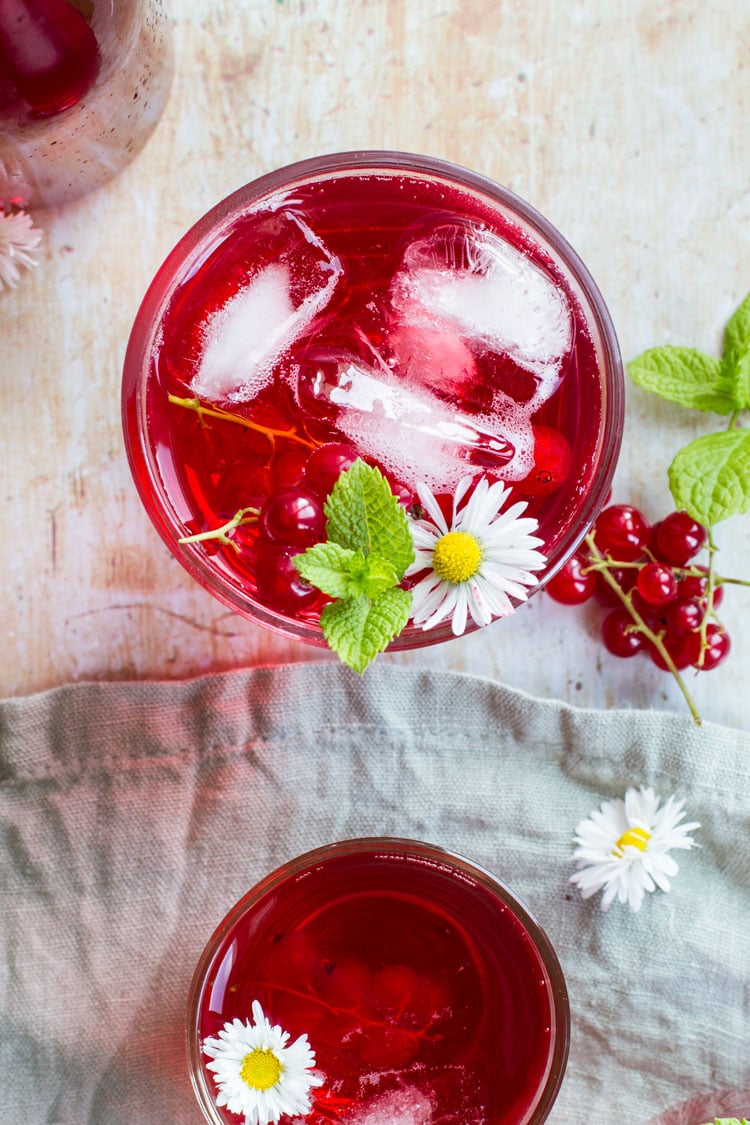
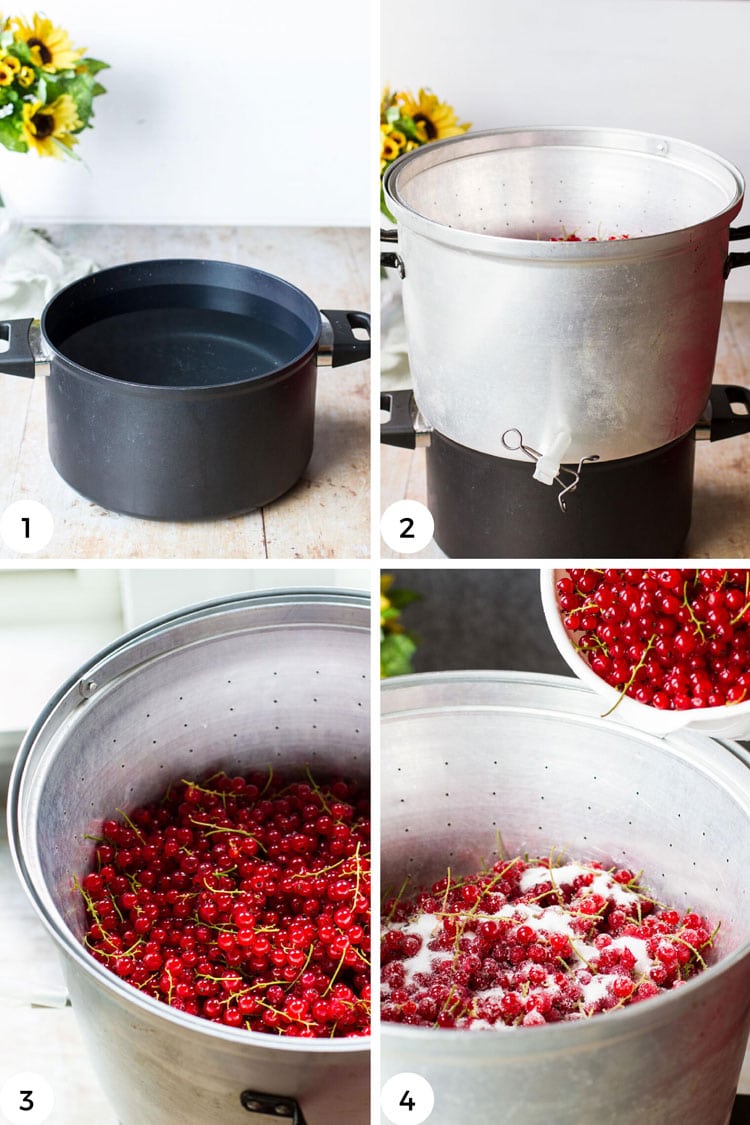
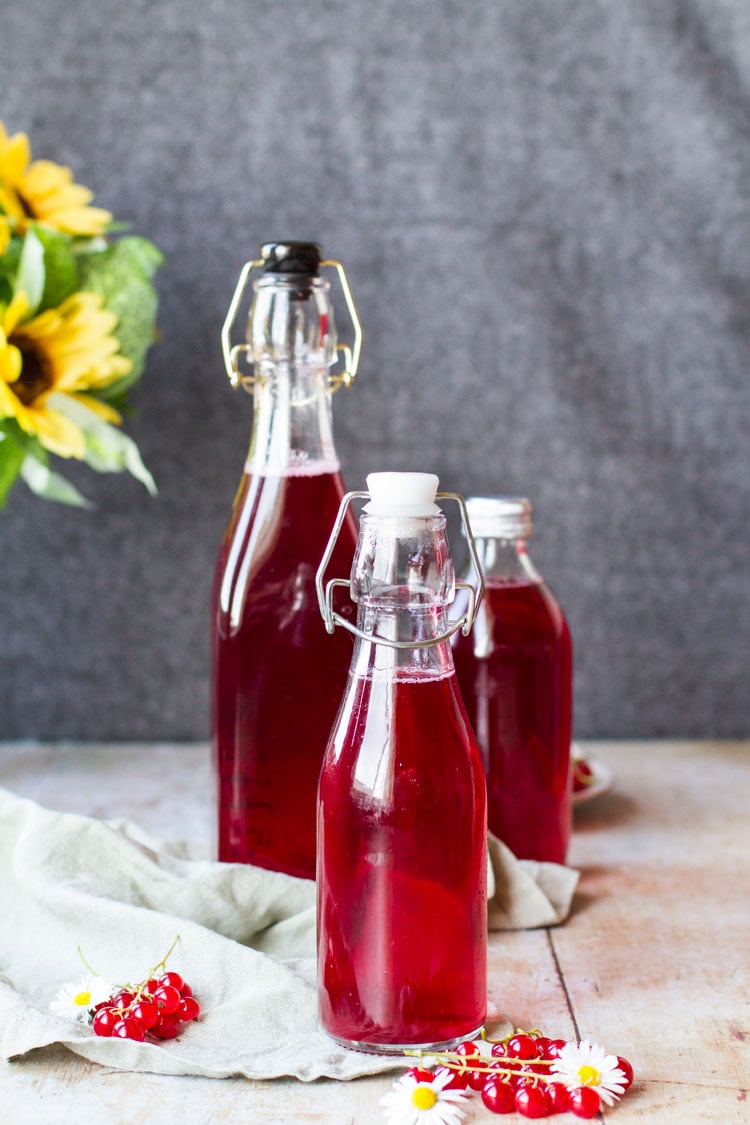
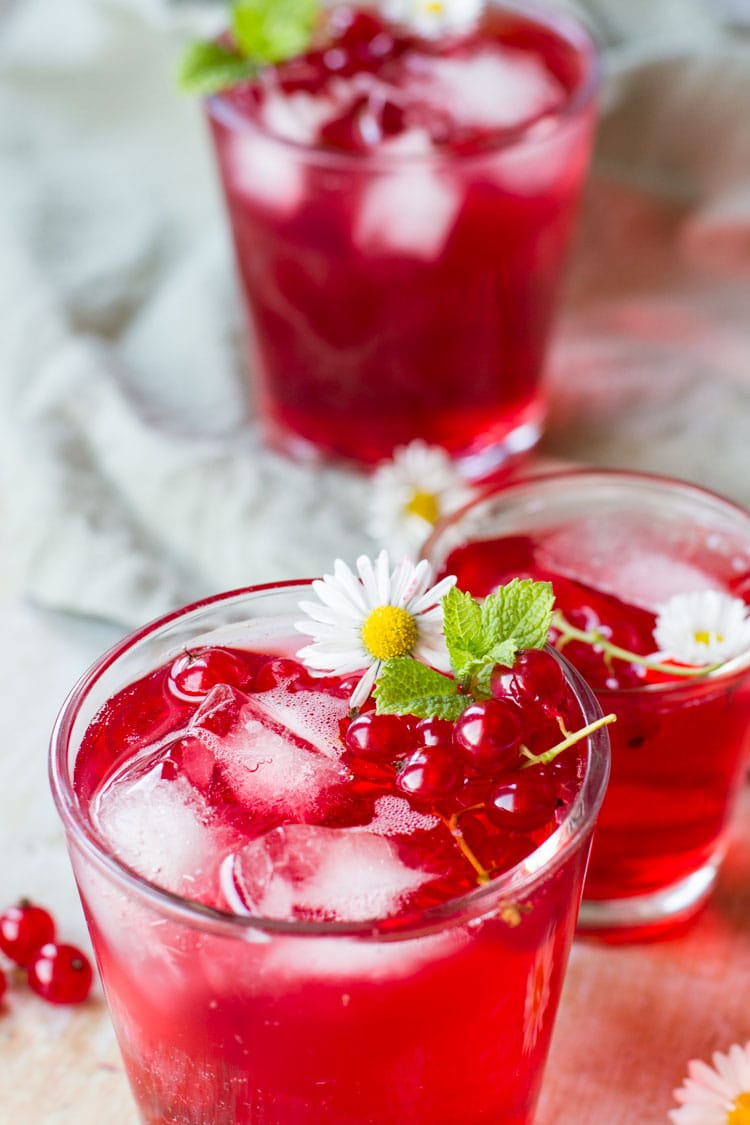
EM
Monday 16th of May 2022
Thank you for the generous information you share! I would like to know why lemon/citric acid isn't added to the boiling method, but it is added to the raw juice method. Does boiling fruit create a more tart result so citrus isn't needed? Thanks for any thoughts.
EM
Friday 20th of May 2022
@Stine Mari | Ginger with Spice, Thank you so much, that helps!
Stine Mari | Ginger with Spice
Tuesday 17th of May 2022
Hello EM, thanks for your comment and interesting question. Citric acid is used in the raw juice method due to its preservative properties. Raw juice is hard to preserve on its own and adding more sugar would not taste good. :) You can add citric acid to the boiling method too, if you want the cordial to be more tart, but it doesn't need the extra help to preserve it because boiling it preserves it. If you don't want to use citric acid in the raw juicing method, you can, but then you need to freeze the cordial when storing it. Hope this helps!
Redoy
Friday 19th of June 2020
Wow! this recipe looks so yummy and tasty. Thanks for sharing this recipe. take care...
Stine Mari | Ginger with Spice
Friday 19th of June 2020
Thank you so much!
Jere Cassidy
Friday 19th of June 2020
What a pretty color. I have never had a cordial and it's just not a thing here in California, although it should be. And, again, we just don't seem to have currents. I am feeling I am missing something really good.
Stine Mari | Ginger with Spice
Friday 19th of June 2020
I think you would love cordial. Currants are really really good, but there are so many great berries so you can definitely make cordial with the ones you have available. But if you ever see currants - give them a try!
Sapana
Tuesday 16th of June 2020
Omg this berry cordial look so refreshing. I have had tried elderberry cordial so far. I will definitely give this a try.
Stine Mari | Ginger with Spice
Wednesday 17th of June 2020
Berry cordial will always be my favorite. Thank you!
Ramona
Monday 15th of June 2020
Oh my goodness, the colour in this berry cordial!!! Absolutely gorgeous, I definitely prefer the raw version. My mum used to make something very similar with cherries and with raspberries. Delicious and beautiful pictures too!
Stine Mari | Ginger with Spice
Tuesday 16th of June 2020
Thank you so much! I just love to find ways to preserve all the delicious summer berries!